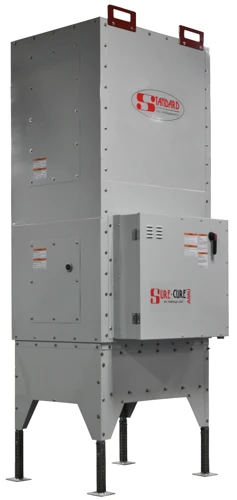When it comes to maintaining a healthy living environment, understanding room ventilation and the role of paint types is crucial. Proper ventilation ensures that indoor air remains fresh, removing pollutants and moisture that can accumulate within the space.
Importance of Improving Room Ventilation
Improving room ventilation is essential for both comfort and health. Good airflow reduces the concentration of indoor pollutants, minimizes the risk of mold growth, and helps eliminate odors. It is particularly important in spaces that have been recently painted, as it aids in dissipating fumes and helps the paint cure properly.
Choosing the Best Paint for Airflow
To enhance the air quality of your home, selecting the best paint for airflow is a wise decision. Some paints contain fewer chemicals and are designed to let walls breathe better, contributing to improved indoor air circulation.
Paint Finishes and Air Movement
Paint finishes also influence air movement within a room. Glossier finishes tend to be less permeable, while matte or flat finishes allow for better air movement across the wall surface, aiding in the overall ventilation of the space.
Breathable Paints for Walls
Breathable paints for walls are specially formulated to allow moisture and air to pass through, preventing the buildup of condensation and promoting a healthier indoor environment.
Enhancing Airflow in Painted Rooms
Enhancing airflow in interiors is not only about choosing the right paint but also about employing strategies that promote circulation and freshness in the air we breathe indoors.
Strategies for Air Circulation in Painted Rooms
Strategies to promote air circulation in painted rooms include the strategic placement of furniture, ensuring vents are unobstructed, and using indoor plants to naturally purify the air.
Maximizing Airflow in Living Spaces
Maximizing airflow in living spaces can be achieved by incorporating design elements that facilitate air movement, such as open floor plans and proper alignment of windows and doors to create a cross breeze.
Effective Use of Fans and Air Conditioners
The effective use of fans and air conditioners can greatly assist in maintaining airflow, especially in rooms without adequate natural ventilation. Ceiling fans, in particular, can help circulate air throughout the room.
Practical Ventilation Tips for Painted Rooms
There are several practical ventilation tips for painted rooms that can help maintain a fresh and healthy environment in your home.
Utilizing Windows and Doors for Natural Ventilation
Utilizing windows and doors is a simple yet effective way to enhance natural ventilation. Opening them regularly allows for a change of air and helps to keep the indoor atmosphere fresh.
Employing Exhaust Fans and Air Purifiers
Employing exhaust fans, especially in bathrooms and kitchens, can remove moisture and odors quickly. Air purifiers with HEPA filters can also improve painted room air quality by trapping airborne particles.
Integrating Air Flow Optimization in Home Design
Integrating air flow optimization in home design from the outset can have a lasting impact on indoor air quality. This includes considering the placement of windows, doors, and even the direction the home faces to maximize natural airflow.
Avoiding Common Myths in Room Ventilation
It’s important to address and avoid common myths surrounding room ventilation to ensure that you are truly enhancing the air quality in your home.
Debunking Misconceptions About Airflow and Paint Fumes
One common misconception is that simply opening a window is enough to clear out paint fumes. While this helps, it is often not sufficient without additional circulation methods such as fans or air purifiers.
Safety Measures for Ventilating Newly Painted Rooms
After applying a fresh coat of paint, certain safety measures should be taken to ensure the space is properly ventilated.
Duration of Ventilation Post-Painting
The duration of ventilation post-painting will depend on the type of paint used and the conditions of the room. Typically, it is recommended to ventilate a newly painted room for at least 2 to 3 days.
Protective Measures During and After Painting
Protective measures during and after painting include using drop cloths to protect furniture, wearing masks to avoid inhaling fumes, and keeping the room vacated by vulnerable individuals until the paint has fully dried and the fumes have dissipated.
Advanced Methods for Enhancing Room Air Quality
For those looking to take room air quality to the next level, there are advanced methods and tools available.
Technology and Tools for Improved Indoor Air Quality
Smart home technology and advanced air quality monitors can provide real-time feedback on indoor air conditions, allowing for more precise control over the environment.
Professional Solutions for Ventilation Challenges
Professional solutions, such as HVAC system upgrades or the installation of energy recovery ventilators (ERVs), can address complex ventilation challenges, ensuring a steady exchange of indoor and outdoor air.
Conclusion
Ensuring healthy air quality in painted rooms is crucial for the well-being of occupants. By understanding the relationship between paint choices and ventilation, employing effective strategies for air movement, and debunking common myths, homeowners can enjoy a fresh and healthy indoor environment.

